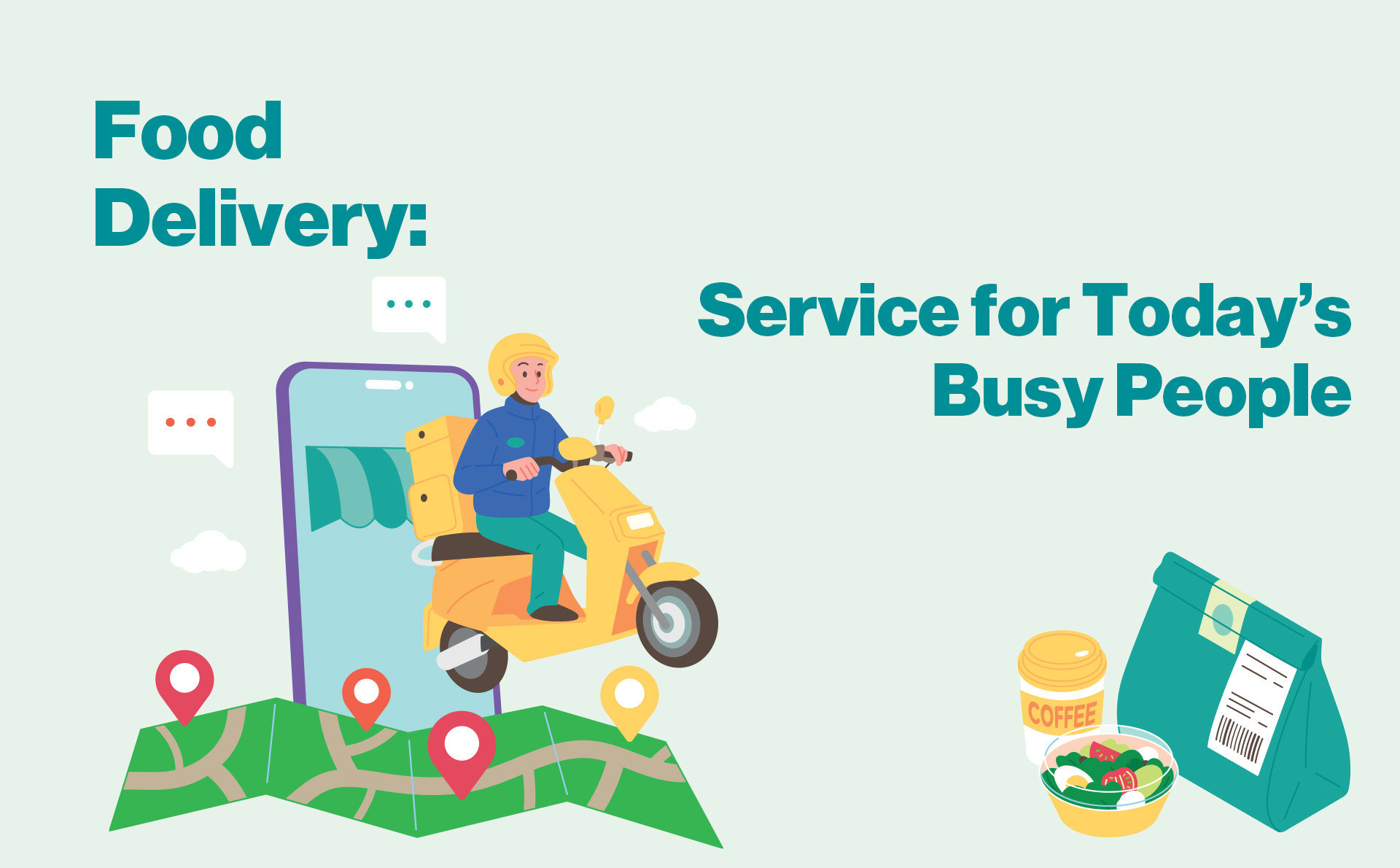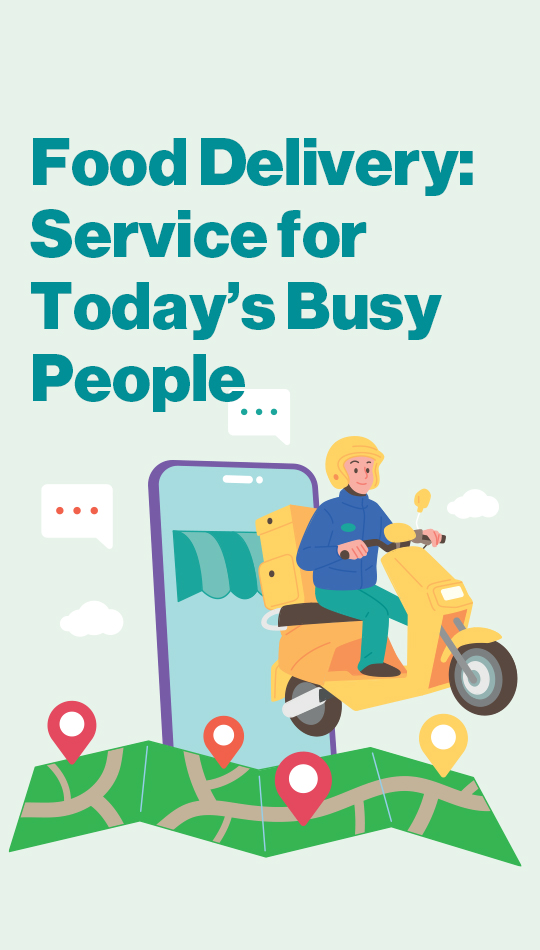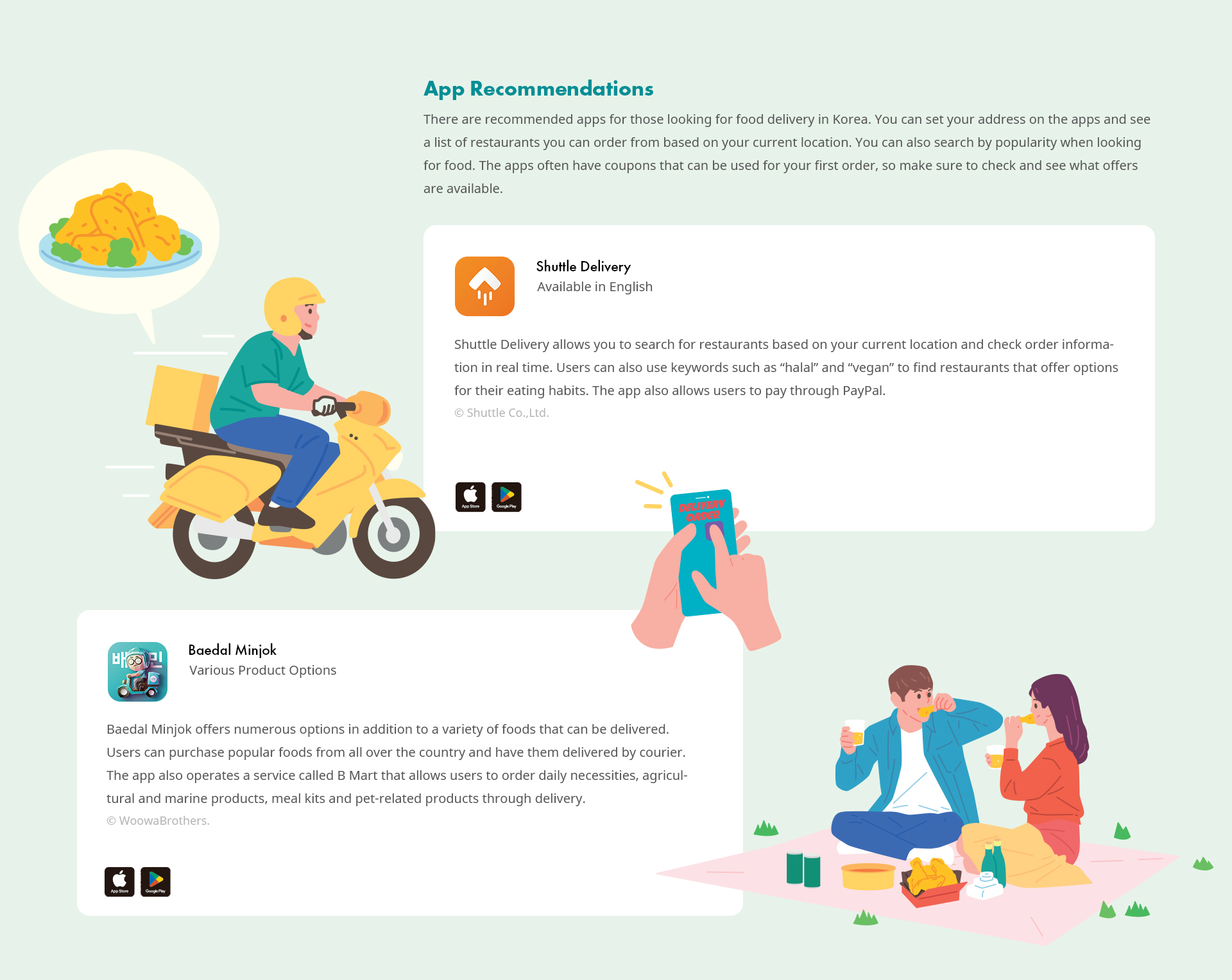Busy modern people are finding it difficult to prepare meals every single day. Shopping for groceries and cooking requires a lot of time and effort. That’s why people are willing for food delivery services. Food delivery has significantly simplified daily life. Nowadays, you can see numerous motorcycles traveling on Korean roads delivering food. Many people have turned to delivery apps instead of preparing food.


Writer.
Choi Yeonu
Illustrator.
RYUGOON
The Rise of Food Delivery Services
In the past, you had to call a restaurant if you wanted to order delivery. You would have to say each item you wanted to order as well as tell them the address for delivery. When the food was delivered, you would have to open your wallet, take out cash and pay for the food. Now, you can use smartphone apps to order food. These apps can automatically check your location and determine the address for delivery. You can select the items you want and the app sends the order to the restaurant. You can also pay in advance through the app. These features have gradually enticed people to begin actively using delivery services.
People were incredibly reluctant to go out when COVID-19 struck the world in 2020. A work-from-home system was implemented to prevent the spread of infection, which naturally led to people being home for much longer periods of time. People were finding it burdensome to cook all their meals at home, so they began looking for delivery apps. The apps made it possible for people to order food they would normally eat at a restaurant and instead eat it at home. Food was also delivered quickly, usually within an hour. People were impressed by the convenience of food delivery, and the number of delivery app users increased exponentially.
Food delivery became more diverse after the pandemic passed. There was a time when only chicken and jjajangmyeon (noodles in black bean sauce) could be delivered. However, delivery options have expanded, and people can even order desserts such as ice cream and cotton candy. You can even order pre-packaged meal kits for soups and stews. The food in these kits comes prepped and packed, so all you have to do is heat them up at home and enjoy. Delivery apps have allowed the food delivery culture in Korea to blossom by offering various types of food and preparations.
Food Delivery is Blossoming
We are tempted by food delivery every time we turn on the TV. Not only do we see advertisements for delivery apps, but we also see celebrities on entertainment shows ordering and eating food that has been delivered. People turn to delivery apps when they see others eating delicious food. Restaurants will advertise their food as being “ordered by celebrities.”
Some delivery apps also deliver food that is sold at regular supermarkets. For example, they sell water, instant rice, fruit and cup noodles. They also sell small packages of fruits and vegetables for single-person households who often find it difficult to order food delivery for one. You can also order meal kits for one person that are easy to make and eat. People use these options to find meals that are quick to eat so they can enjoy their leisure time.
A food culture has emerged where people enjoy short picnics with food delivered when the weather is nice. There are places where you can rent tents around the Hangang River, the largest river in Korea. People rent tents and have food (usually chicken and beer) delivered to them at the Hangang River. It may feel a bit awkward to have food delivered to you while you’re outside, but Koreans see it as a unique leisure time where they can enjoy eating food delivered to them while admiring the outdoor scenery.
There is a time in Korea referred to as “boknal” that takes place between July and August. Boknal consists of three sets of days that are considered to be the hottest time of summer. People usually eat foods that are rich in nutrients during boknal. One such food is chicken. Delivery apps normally hold various events during boknal. They provide discounts that can be used at places that sell chicken. They also offer drawings where people can win free delivery. It may take a bit longer than usual to receive your food during this time, but you can get it at a cheaper price. Koreans have combined celebrations for special days with food delivery culture.
In this way, Koreans have completely integrated food delivery into their daily lives. Koreans can now receive food wherever they want. They also have easy access to unique cuisines as well as food from famous restaurants. Delivery culture has continued to develop along with Korean society, which has led to more innovative delivery services and job creation. Food delivery has continued to make the daily lives of Koreans more convenient, delicious and diverse.



